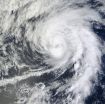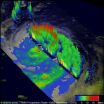(Press-News.org) Inflammation is the hallmark of many human diseases, from infection to neurodegeneration. The chemical balance within a tissue is disturbed, resulting in the accumulation of reactive oxygen species (ROS) such as hydrogen peroxide, which can cause oxidative stress and associated toxic effects.
Although some ROS are important in cell signaling and the body's defense mechanisms, these chemicals also contribute to and are indicators of many diseases, including cardiovascular dysfunction. A non-invasive way of detecting measurable, low levels of hydrogen peroxide and other ROS would provide a viable way to detect inflammation. Such a method would also provide a way to selectively deliver drugs to their targets.
Adah Almutairi, PhD, associate professor at the Skaggs School of Pharmacy and Pharmaceutical Sciences, the Department of NanoEngineering, and the Materials Science and Engineering Program at the University of California, San Diego, and colleagues have developed the first degradable polymer that is extremely sensitive to low but biologically relevant concentrations of hydrogen peroxide.
Their work is currently published in the online issue of the Journal of the American Chemical Society.
These polymeric capsules, or nanoparticles, are taken up by macrophages and neutrophils – immune system cells that rush to the site of inflammation. The nanoparticles then release their contents when they degrade in the presence of hydrogen peroxide produced by these cells.
"This is the first example of a biocompatible way to respond to oxidative stress and inflammation," said Almutairi, director of the UC San Diego Laboratory of Bioresponsive Materials. "Because the capsules are tailored to biodegrade and release their cargo when encountering hydrogen peroxide, they may allow for targeted drug delivery to diseased tissue."
Almutairi is looking to test this method in a model of atherosclerosis. "Cardiologists have long needed a non-invasive method to determine which patients are vulnerable to a heart attack caused by ruptured plaque in the arteries before the attack," she said. "Since the most dangerous of plaques is inflamed, our system could provide a safe way to detect and treat this disease."
INFORMATION:
Additional contributors to the study include Caroline de Gracia Lux, Shivanjali Joshi-Barr, Trung Nguyen, Enas Mahmoud, Eric Schopf and Nadezda Fomina.
This research was supported by the NIH Director's New Innovator Award 1DP2OD006499-01 and a King Abdulaziz City for Science and Technology center grant to the Center of Excellence in Nanomedicine at UC San Diego.
Nanoparticles detect biochemistry of inflammation
2012-09-19
ELSE PRESS RELEASES FROM THIS DATE:
Aldo Leopold's field notes score a lost 'soundscape'
2012-09-19
MADISON -- Among his many qualities, the pioneering wildlife ecologist Aldo Leopold was a meticulous taker of field notes.
Rising before daylight and perched on a bench at his Sauk County shack in Depression-era Wisconsin, Leopold routinely took notes on the dawn chorus of birds. Beginning with the first pre-dawn calls of the indigo bunting or robin, Leopold would jot down in tidy script the bird songs he heard, when he heard them, and details such as the light level when they first sang. He also mapped the territories of the birds near his shack, so he knew where the ...
Theory: Music underlies language acquisition
2012-09-19
HOUSTON – (Sept. 18, 2012) – Contrary to the prevailing theories that music and language are cognitively separate or that music is a byproduct of language, theorists at Rice University's Shepherd School of Music and the University of Maryland, College Park (UMCP) advocate that music underlies the ability to acquire language.
"Spoken language is a special type of music," said Anthony Brandt, co-author of a theory paper published online this month in the journal Frontiers in Cognitive Auditory Neuroscience. "Language is typically viewed as fundamental to human intelligence, ...
Prejudice can cause depression at the societal, interpersonal, and intrapersonal levels
2012-09-19
Although depression and prejudice traditionally fall into different areas of study and treatment, a new article suggests that many cases of depression may be caused by prejudice from the self or from another person. In an article published in the September 2012 issue of Perspectives on Psychological Science, a journal of the Association for Psychological Science, William Cox of the University of Wisconsin-Madison and colleagues argue that prejudice and depression are fundamentally connected.
Consider the following sentence: "I really hate _____. I hate the way _____ look. ...
CU mathematicians show how shallow water may help explain tsunami power
2012-09-19
While wave watching is a favorite pastime of beachgoers, few notice what is happening in the shallowest water. A closer look by two University of Colorado Boulder applied mathematicians has led to the discovery of interacting X- and Y-shaped ocean waves that may help explain why some tsunamis are able to wreak so much havoc.
Professor Mark Ablowitz and doctoral student Douglas Baldwin repeatedly observed such wave interactions in ankle-deep water at both Nuevo Vallarta, Mexico, and Venice Beach, Calif., in the Pacific Ocean -- interactions that were thought to be very ...
The cost of glaucoma care: Small group of patients accounts for large part of costs, study finds
2012-09-19
ANN ARBOR, Mich. — A small subset of patients with open-angle glaucoma (OAG) account for a large proportion of all glaucoma-related charges in the United States, according to new data published by researchers at the University of Michigan Kellogg Eye Center and Washington University, St. Louis.
These findings have importance for future evaluations of the cost-effectiveness of screening and treatment for glaucoma.
"We've identified risk factors associated with patients who are the costliest recipients of glaucoma-related eye care," says Joshua D. Stein, M.D., M.S., ...
NASA sees Hurricane Lane punched in the eye
2012-09-19
Powerful thunderstorms wrapped tightly around Hurricane Lane's center as it continued moving through the eastern Pacific Ocean. When NASA's Terra satellite passed over Lane it captured a close-up view of the storm and noticed that Lane's eye had become cloud-filled as if being punched in the eye. Nature is expected to fight Lane more and win over the next couple of days.
The Moderate Resolution Imaging Spectroradiometer (MODIS) instrument captured a close-up of Lane on Sept. 17 at 3:25 p.m. EDT when it was still a hurricane. In the image, Lane's eye appeared obscured ...
NASA's TRMM satellite measures drenching rains from Typhoon Sanba in Japan, South Korea
2012-09-19
Heavy rainfall from Typhoon Sanba caused flooding, landslides and at least one death when it hit South Korea on Monday September 17, 2012. NASA's TRMM satellite captured rainfall and thunderstorm cloud height data as Sanba drenched southwestern Japan earlier, and its eye passed to the west of the Japanese island of Kyushu.
The Tropical Rainfall Measuring Mission (TRMM) satellite provided good coverage of Sanba as it passed over Typhoon Sanba on Sept. 16, 2012 at 0349 UTC, after Sanba had passed over Okinawa, Japan. Sanba was moving northward over the East China Sea toward ...
Purple corn compound may aid in developing future treatments for Type 2 diabetes, kidney disease
2012-09-19
BETHESDA, Md. (Sept. 18, 2012)—Diabetic nephropathy is one of the most serious complications related to diabetes, often leading to end-stage kidney disease. Purple corn grown in Peru and Chile is a relative of blue corn, which is readily available in the U.S. The maize is rich in anthocyanins (also known as flavonoids), which are reported to have anti-diabetic properties. Scientists from the Department of Food and Nutrition and Department of Biochemistry at Hallym University in Korea investigated the cellular and molecular activity of purple corn anthocyanins (PCA) to determine ...
NASA eyes Tropical Storm Nadine as watches go up for Azores
2012-09-19
VIDEO:
This animation of satellite observations from Sept. 14-18, 2012, shows Tropical Storm Nadine in the central Atlantic. NASA's HS3 Mission Global Hawk investigated Nadine on Tropical Storm Nadine on Sept....
Click here for more information.
Tropical Storm Nadine is nearing the Azores and watches have gone up for the northwestern group of the islands. NOAA's GOES-13 satellite captured a visible image of Nadine as it continues moving northeast through the Atlantic.
On ...
Blood pressure diet works, but adherence drops among African-Americans
2012-09-19
DURHAM, N.C. – Better adherence to the DASH (Dietary Approaches to Stop Hypertension) diet is associated with significant reductions in blood pressure. However, African-Americans may be less likely than whites to adopt the diet, according to researchers at Duke University Medical Center.
The findings, which appear online September 19 in the Journal of the Academy of Nutrition and Dietetics, suggest that altering traditional recipes to meet nutritional guidelines rather than eliminating certain foods altogether may result in better adherence among African-Americans.
The ...




